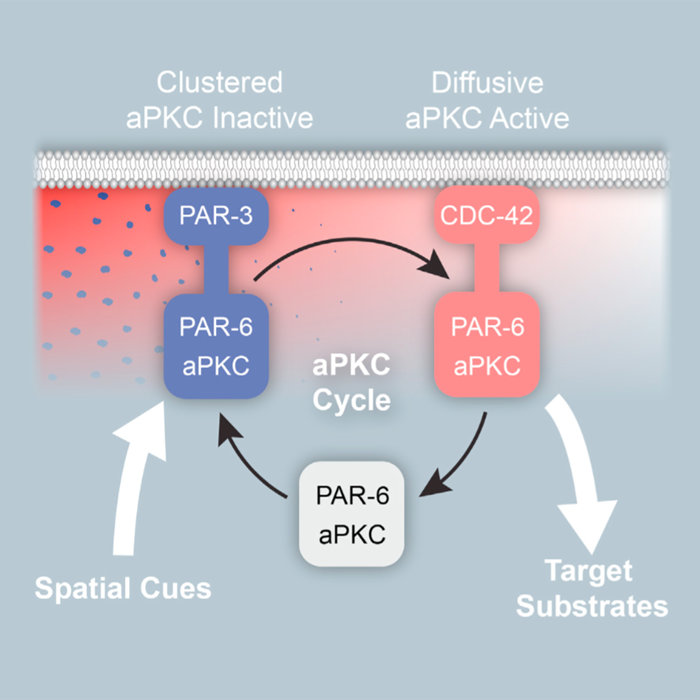Publication in Developmental Cell for Goehring Lab
aPKC Cycles between Functionally Distinct PAR Protein Assemblies to Drive Cell Polarity
Rodriguez et al, Developmental Cell, DOI 10.1016/j.devcel.2017.07.007
Abstract from the article.
The conserved polarity effector proteins PAR-3, PAR-6, CDC-42, and atypical protein kinase C (aPKC) form a core unit of the PAR protein network, which plays a central role in polarizing a broad range of animal cell types. To functionally polarize cells, these proteins must activate aPKC within a spatially defined membrane domain on one side of the cell in response to symmetry-breaking cues. Using the Caenorhabditis elegans zygote as a model, we find that the localization and activation of aPKC involve distinct, specialized aPKC-containing assemblies: a PAR-3-dependent assembly that responds to polarity cues and promotes efficient segregation of aPKC to- ward the anterior but holds aPKC in an inactive state, and a CDC-42-dependent assembly in which aPKC is active but poorly segregated. Cycling of aPKC between these distinct functional assemblies, which appears to depend on aPKC activity, effectively links cue-sensing and effector roles within the PAR network to ensure robust establishment of polarity.
Find out about the Goehring Lab.
 Close
Close


